The debate about vaccines or no vaccines continues. Healthy Living looks at both sides of this important issue.









SELF-EMPLOYMENT











Starting a small business is a big task.


HELPING FRIENDS
Student ambassadors seek to help.


SEP '19 STOP THE NEGATIVITY! | Facing chronic illness is worsened by guilt and negative thoughts. p.52

Life-changing care. Delivered close to home. By your side. Visit leesburgregional.com to learn more about our services.
100% FINANCING AVAILABLE



















HOME & BUSINESS BACKUP GENERATORS Electrical Works installs both residential and commercial generators. The best part is generators on the market are much more affordable because Electrical Works offers 100 percent financing. 307 East Main St, Leesburg FL 34748 352.460.0810 electricalworksflorida .com LICENSE EC13005476 COMMERCIAL RESIDENTIAL
KNEE REPLACEMENT? OR
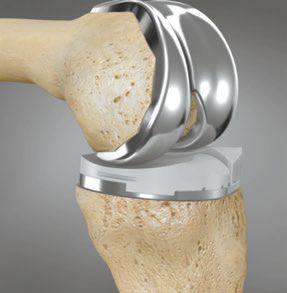
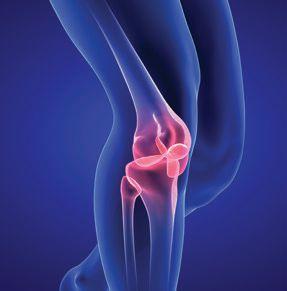
DO YOU MEAN







PERFORMANCE UPGRADE?

At Advanced Orthopedics Institute we specialize in hips, knees, shoulders, ankles, wrists...and tennis players.





Knee pain, stiffness, locking, giving way (buckling), creaking, swelling or inability to walk or play without pain can occur because of traumatic injury, arthritis, or overuse. Depending on the cause, conservative care such as a brace or therapy may relieve the pain.
If not, rejuvenative stem cell therapy, arthroscopic knee surgery or partial or total knee replacement can be life-enhancing and allow you to return to your active lifestyle.
Get moving. Call 352.751.2862.
GET A-OK WITH AOI






















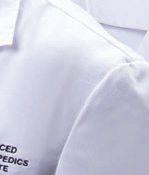


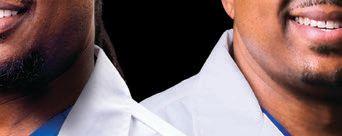






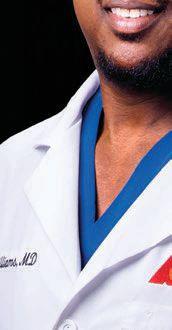

John T. Williams,
1400 N US Hwy 441, Suite 552 | The Villages, FL 32159 phone 352.751.2862 | fax 352.751.5541 | go a o i .com
Jr., MD Alfred J. Cook, Jr., MD










































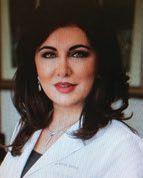
Appointments: 866.400.DERM (3376) Love This summer the skin you’re in Brownwood Paddock Square™ 3614 Kiessel Rd. The Villages, FL 32163 352.571.7000 Buenos Aires Professional Center 1503 Buenos Aires Blvd., Bldg. 100 The Villages, FL 32162 352.753.2812 Lake Sumter Landing™ 910 Old Camp Road Suite 166 The Villages, FL 32162 352.205.4959 The nation’s largest dermatology practice has three locations in The Villages ® community. We now accept United Healthcare Medicare Advantage. Lasers Now Available at Lake Sumter Landing Fine lines, brown spots, skin rejuvenation, tattoo removal Stephen Eubanks, MD, FAAC ADCS National Laser Director Ellie Mirali, MPAS, PA-C Board Certified Physician Assistant Welcome
General Dermatology



Comprehensive care for skin, hair and nail disorders including eczema, psoriasis, rosacea, dry skin, moles, skin tags, adult acne, hair loss, ingrown hairs and more

Skin Cancer Screening, Biopsies and Treatment





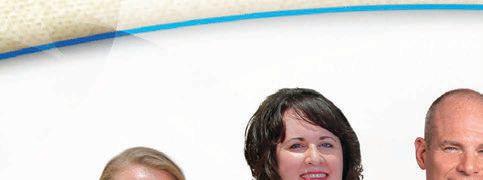

Mohs Micrographic Surgery, Annual Total-Body Skin Cancer Exams SM and Photodynamic Therapy
Cosmetic Dermatology



BOTOX®, fillers, skin rejuvenation, chemical peels and other aesthetic procedures, and skin care products



AdvancedDerm.com Immediate Appointments Available | Most Insurance Accepted (including UnitedHealthcare ® The Villages ® MedicareComplete ®) Helping Patients Achieve Healthy, Beautiful Skin… At Every Age
YOUR SIGHT, OUR VISION.

The doctors were so amazing, kind and knowledgeable. They saved my sight and really helped me see clearly.




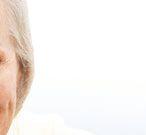
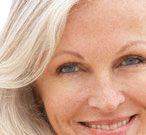
 – Barbara Sue Jansen
– Barbara Sue Jansen



SPECIALISTS WITH EYE-OPENING EXPERIENCE.





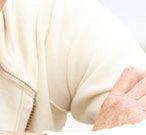




As the premier practice in the area offering comprehensive eye care, Mid Florida Eye Center is renowned for participating in nationwide research studies and pioneering advances in vision-saving technologies. All of our ophthalmologists are board certified and fellowship trained. Most importantly, we are committed to providing the dedicated care to help change the way you see your future.

MOUNT DORA | LEESBURG ADJACENT TO THE VILLAGES ® COMMUNITY: STONECREST & WILDWOOD ® 888.820.7878 MIDFLORIDAEYE.COM CATARACT | RETINA | COSMETIC | GLAUCOMA | LASERS
Dr.Dr.WilkerDr.Panzo MaizelDr.CharlesDr.GoldeyDr.BaumannDr.Bovee
DEPARTMENTS
18. It’s a free country.

locals what freedom means to them.
James Combs 22.
AreVaccinations:
they worth a shot? To vaccinate or not to vaccinate your child—that is the question on the minds of many people amid a measles outbreak in the United States. Doctors and parents weigh vaccines and safety concerns.

Chris Gerbasi
32. together.Forever
a program of Be Free Lake, educates today’s youth to seek help when their friends may be suffering from mental illness or depression.
Theresa Campbell
35.
36. The tooth shall set you free. Learn the facts behind your child’s dental needs.


38. As American as apple…sandwiches? Here’s a recipe for peanut butter apple sandwiches.
40. Arm yourself. Exercises to increase arm strength and improve core.


42. Beyond the swimsuits and tan lines. Remember, healthy eating should also be a warm weather habit.





45.
46. Technically speaking. Myths on how technology has improved our lives.
48. Be a man or woman of your word. Eliminating negative vocabulary can bring positivity to your life.
51.


52. Happy days. Steps to rid yourself of negative thoughts.
54 Homework hell? How to motivate different personality types to complete assignments.
59.




60. Quite the asset. Read Dave Ramsey’s expert

62. Go about your business. Steps to starting a small company.






COLUMNS
10. Publisher’s letter 12. Health matters 14. Healthy inspiration 66. Final impressions

Sep. 2019 contents VOLUME 11 ISSUE 12
Kathryn Borowsky,
this month’s healthy inspiration
Researching the best choice
Vaccinations have been a hot topic for several years now. There are many passionate people on both sides of the fence of whether or not these shots are causing their body harm or giving them the protection they need to stay healthy.
In this issue, you will read an in-depth feature on the subject. We interviewed professionals and parents who gave their reasons for why they vaccinate or why they don’t. They give detailed responses to many questions about their views on vaccinations. And doctors and health-care professionals give their expertise and share what they think people should know when making that important decision to vaccinate or not.
I know as a parent of six children that all we want is the best for our kids and for them to stay healthy and live a long life protected from all the bacteria and germs in the world. All we can do, however, is stay as informed as we can and make the best decisions we can for our children.
That’s one reason why we decided to do this feature, to shed light on what we all need to know when making these decisions for our kids and ourselves.
For this issue, I also wanted to remind our readers that we have a monthly column that has been published in this magazine for almost 10 years. We are honored to showcase nationally admired financial guru Dave Ramsey. He’s the author of “The Total Money Makeover” workbook and “The Money Answer Book” and the founder of courses such as Financial Peace University and Foundations Curriculum. Don’t forget to check out his column, “Dave Says,” each month and look for ways to better manage your money. Wishing you much health and happiness.
Doug Akers / President doug@akersmediagroup.com
Kendra Akers / Publisher/Editor-In-Chief kendra@akersmediagroup.com
Sabrina Ciceri / Associate Publisher sabrina@akersmediagroup.com

editorial, design & photography
Jason Fugate Creative Director jason@akersmediagroup.com
Leigh Neely Managing Editor leigh@akersmediagroup.com
James Combs Staff Writer james@akersmediagroup.com
Theresa Campbell Staff Writer theresa@akersmediagroup.com
Chris Gerbasi Staff Writer chris@akersmediagroup.com
Anthony Rao Staff Photographer anthony@akersmediagroup.com
Volkan Ulgen Art Director volkan@akersmediagroup.com
Michael Gaulin Production Director michael@akersmediagroup.com
Douglas Tyler Designer douglas@akersmediagroup.com
Megan Mericle Designer megan@akersmediagroup.com
Nicole Hamel Staff Photographer nicole@akersmediagroup.com
contributing writers
Dr. Richard T. Bosshardt, Dave Ramsey, Vilma Rosario, Dr. Keith Kantor, Jan Hranicky, Teresa Stickney, Dan Noble, Dr. Charles Reinertsen, Christy Wright sales & marketing
Tim McRae
Vice President, Sales tim@akersmediagroup.com

Melanie Melvin Director of Marketing melanie@akersmediagroup.com
Dillon True Advertising Executive dillon@akersmediagroup.com
Shaena Long Sales Assistant shaena@akersmediagroup.com
administration
Deb Matlock Director of Client Services deb@akersmediagroup.com

Aubrey Akers Simmons aubrey@akersmediagroup.com
distribution
Scott Hegg / Distribution Manager scott.hegg@akersmediagroup.com
Sabrina
COMMENTS OR QUESTIONS? Our goal is to provide you with the best quality publication, so your feedback is vital.
10 lakehealthyliving.com
Healthy Living. Published monthly by Akers Media, P.O. Box 490088 Leesburg, FL 34749 or 108 South Fifth Street, Leesburg, FL 34748. Phone: 352.787.4112. Fax: 352.323.8161. All contents are copyrighted © 2019 by Akers Media, Inc. DBA Lake County’s Healthy Living Magazine. All reproduction or use of content without written permission is strictly prohibited under penalty of law. The contents of the Lake County’s Healthy Living Magazine are for informational purposes only. The information is not intended to be an alternative to professional medical advice, diagnosis or treatment. Always seek the advice program. The ideas and opinions contained in this publication do not necessarily reflect the thoughts or opinions of Akers Media.
publisher'sletter




















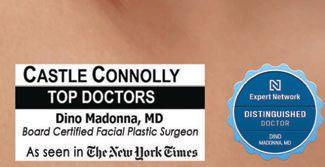
352.259.5126 Face2FaceFL.com THE VILLAGES LEESBURG TAVARES FACIAL COSMETIC SURGERY | BOTOX | LASER TREATMENTS | PEELS | SKIN CARE PRODUCTS Designed & Developed by Dino Madonna, MD AESTHETICS AND WELLNESS Fall Into A Fresh Look! CALL FOR YOUR CONSULTATION AND UPLIFT YOUR LOOK TODAY!
I WANT TO RIDE MY BICYCLE


Big Bike Weekend, an event that is a partnership between the Sumter Landing Bicycle Club and The Villages Regional Hospital Auxiliary Foundation, is planned for Nov. 8-10. Funds raised at this annual event go to support TVRH. So far, there has been an increase in participants every year, and one of the most popular elements of this event is the cycling teams. Team categories include health services, restaurants, wealth management, cycling clubs, armed forces, colleges, and small businesses. Teams within each category compete to win the traveling trophy. Time to start getting your team together or preparing yourself for the race. Get information at h4hbikeweekend.com.
LEARN TO SWIM


Many people tend to think you reach an age when you no longer need to learn to swim. Don Shepherd says that’s just not true. He teaches classes for beginning swimmers through the Enrichment Academy in The Villages. “I offer classes to those who want to learn to swim and to those who wish to be stronger and better swimmers,” Don says. Classes are held from April to Dec. 19. For information, call Don at 352.775.9878.
CREAMY— AND HEALTHY—MAC AND CHEESE


Pamela’s White Cheddar Mac is glutenfree, made with organic pasta, and has 13 grams of protein in a serving. Two staff members pronounced it delicious as an entrée. The beautiful plated photo above was prepared by a staff member. It hits all the right marks and is tasty and flavorful as well, with a thick, creamy cheese sauce. Other healthy products by Pamela’s include Spicy Mac N’ Cheese, Creamy Alfredo Penne, Creamy Mushroom Penne, and Vegan Mac. If you’re looking for healthy cookies for kids’ lunches, you may want to try the Whenever Bar (oat, chocolate chip, coconut) or Figgies & Jammies Big Fig bar.
AMERICANS AND SMOKING
Cigarettes began carrying health warnings in 1965. Here is current data on smoking from the National Institutes of Health for both men and women:
58.6%



NEVER SMOKED

21.2%







FORMER SMOKERS

healthmatters
GOT PAIN? CHILL

The staff of Healthy Living received a sample of Asutra Chill Pain Away and found it very effective for some types of chronic or temporary pain. It is great for sore, achy muscles or cramps anywhere on the body. You can apply the unscented cream and go anywhere without anyone knowing you’re treating your pain. It is a combination of magnesium and pure CBD, which is why it works so quickly and so well. However, it contains less than 3 percent of THC, the main active ingredient in cannabis.

THEY’RE ALL THE RAVE
RAVE Reviews, a rankings website based on advanced data-driven analysis, recently released its list of “Best Paleo-Friendly Protein Powders.” (ravereviews.org/health/best-paleo-friendly-protein-powders/) RAVE compared reviews from sources across the internet and factored in protein source, value for money, and, most importantly, quality of ingredients to come up with this list:

• Ancient Nutrition Bone Broth Protein (Franklin, Tennessee)
• BulkSupplements Paleo Beef Isolate (Henderson, Nevada)
• Health Warrior Superfood Protein Powder and Probiotic (Richmond, Virginia)
• Julian Bakery Paleo Protein (Oceanside, California)




• Left Coast Performance Organic Bone Broth Protein (Calgary, Canada)
• PaleoPro Protein (Vista, California)
• PerfectKeto (Austin, Texas)
• Primal Kitchen Collagen Fuel (Oxnard, California)
• Equip Prime Protein (San Francisco, California)
• Vital Proteins Collagen Peptides (Chicago, Illinois)



CFH ANNOUNCES NEW DIRECTOR
Central Florida Health recently announced the appointment of Sonya M. Zeller, DNP, MBA, RN, as director of corporate quality.

“We are excited that Dr. Zeller has joined our team to lead our clinical quality efforts,” says Phyllis Baum, vice president and chief quality officer for Central Florida Health. “Excellence in clinical quality and patient experience are two of our organization’s main priorities and are consistent with Dr. Zeller’s long track record of success
4.4%
in leading teams in these efforts during her illustrious career in executive leadership.”
As system director of quality, Sonya will oversee and direct all quality management activities at Leesburg Regional Medical Center. This includes infection control, accreditation compliance and readiness, performance improvement, patient safety, and the cancer program.
15.8%
SMOKE BUT NOT DAILY
SMOKE DAILY
Turning tragedy into hope
Eustis businessman Joe Ziler is raising awareness about suicide.



Story:
Nonchalant references to death have a way of irritating Joe Ziler.

Like when a Facebook user posts an emoticon with a gun to its head. Or when someone says, “Just shoot me” or “Somebody put me out of my misery.”









His sensitivity stems from experiencing the devastating effects of suicide: the shock, the traumatic aftermath, and the mixed emotions. Six years ago, his brother, Mike Ziler, died from a self-inflicted gunshot wound. He was only 41 and left behind a 17-year-old daughter, Kara Jo.
In Joe’s mind, suicide should no longer be seen as a taboo subject but rather one that is openly discussed and understood for what it really is: a serious public health problem.
Source: American Foundation for
SUICIDE IS THE SECOND-LEADING CAUSE OF DEATH AMONG INDIVIDUALS BETWEEN THE AGES OF 10 AND 34





Source: Centers for Disease Control and Prevention
Kara Jo assisted Joe in coming up with ideas for the billboards, which will remain on display through December. So far, their message has been wellreceived. After posting pictures of his billboards on four different Facebook pages, Joe garnered 2,700 interactions and 1,400 shares in three weeks.

“When someone is considering suicide, I’m hoping that seeing these billboards will interrupt their negative thought process and bring them to an even keel of reality,” Joe says. “Hopefully, these billboards will help them think rationally and realize there is help.”


Joe has also spoken about the subject in several public venues, including LifeStream Behavioral Center’s Gala of Hope. He openly talks about the changing emotions that survivors experience, and for him, anger did not occur until years after his brother’s death.
“I started getting mad after thinking what he did to his daughter,” he says.
“She graduated high school without her dad, she graduated college without her dad, she bought her first home without her dad. And eventually, she’ll have her first child without her dad. With every milestone in life, she’ll have to relive those emotions without him being there.”
14 lakehealthyliving.com
IN 2017, 47,173 AMERICANS DIED BY SUICIDE AND ANOTHER 1.4 MILLION ATTEMPTED SUICIDE.
Suicide Prevention








































































GALDERMA 2018 PREFERRED EXECUTIVE MERZ 2018 TOP INJECTORS 352.259.8599 | WWW.PLASTICSURGERYVIP.COM | 607 CR 466A, FRUITLAND PARK YOU KNOW US AS MESOS, YOU’LL LOVE US AS... JOIN US FOR OUR GRAND OPENING CELEBRATION SEPTEMBER 19TH / 3PM–6PM
DANNY SOARES, MD DOUBLE BOARD-CERTIFIED FACIAL PLASTIC SUR G EO
N
L ARRY BLEVINS, PA, ASLMS FELLOW & MASTER INJECTOR TRAINER
SERVING THE VILLAGES COMMUNITY FOR OVER A DECADE | SCHEDULE YOUR FREE CONSULTATION TODAY!
R OBERTO MENDEZ, MD, FACS BOARD-CERTIFIED PLASTIC SURG EON
Get On Board With iLASIK ®


LASIK laser vision correction has been around for years, successfully improving vision for millions of people around the world. Now there’s iLASIK, which goes beyond standard LASIK to deliver truly customized treatment. iLASIK utilizes iDESIGN®, the first and only system that integrates wavefront technology for superior vision diagnosis, exact eye mapping and unsurpassed precision, and the most advanced excimer laser and iFS® femtosecond laser, which together deliver the quickest, safest and most accurate laser vision correction available.
Vision Correction Built Precisely for You
Dr. Vinay Gutti has performed thousands of successful refractive surgeries and is the first local eye surgeon to employ the iLASIK platform with iDesign custom eye-mapping, which uses more than 1,200 points of data to provide eye mapping that is 25 times more precise than standard measurements for ultimate accuracy.
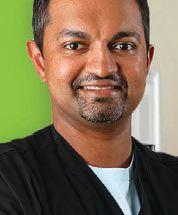

Is today the day to start seeing the world without the barriers created by prescription lenses?
If the answer is yes, the only choice is Lake Eye.


www.LakeEyeLasik.com 1852 Mayo Drive • Tavares, FL 32778 352•63•LASIK
results.
effects
of
vision, increased sensitivity to light, dry eye, reduced night vision and visual irregularities from mild to severe.
DISCLAIMER: Patient results may vary. As with any surgical procedure, there are risks that you should discuss with your doctor before you decide to have surgery. Some patients need additional laser surgery to attain desired
Not all patients are able to give up corrective lenses after surgery. Possible side
include loss
vision, double
FREEDOM

Story:





And, as Americans, we can do all of these things without Obviously, freedom means different things to different asked residents throughout Lake
“Freedom is practicing your own faith, saying what you want, and doing what you want within the boundaries of the law. I served in the United States Marine Corps, so to me, the freedom we enjoy here makes the U.S. the best country in the world.”

 —Gary Hagen, Leesburg
—Gary Hagen, Leesburg


“To me, freedom means less government. Government should be in charge of security and defense and that’s it. I don’t want government involved in my life in any other way.”
—Cheryl Kluesener, Eustis

“Freedom is something that hundreds of thousands of people have died for. As a result, we have freedom of speech, the freedom to vote, the freedom to celebrate whatever holidays we choose, and the freedom of being our own individuals.”


 —Jerry Galbreath, Leesburg
—Jerry Galbreath, Leesburg



18 lakehealthyliving.com
“What’s freedom to me? I have freedom to own my own business. I have freedom to make a positive impact in the community. I have freedom to make my own choices and freedom to be the best person I can be.”

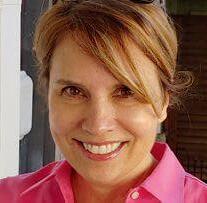
“Simply put, freedom is having the ability to do as I please. That, in a nutshell, is what freedom means to me.”






“There are many different kinds of freedoms, but the one that I enjoy most is financial freedom. I appreciate being able to pay my bills and having enough money left over to create memories with friends and family.”






“It’s being able to do whatever we want and be who we really are. I couldn’t imagine living any other way.”
“Freedom is being able to pray to the God I choose to pray to. Freedom is living in a home with people I choose to be with. Freedom is working and playing in the environment I choose to be in.”

—Amy Colangelo, Umatilla
—Cassandra Daniel, Mount Dora
—Dina Simpson, Leesburg
—Jim Borden, Leesburg
—Daniel Jones, Leesburg
Prostate Cancer: When Should You Test?



Prostate cancers tend to grow slowly—so slowly, in fact, that some tumors never become a problem. But this is not always the case. One monitoring tool is antigen, or PSA.
Treatment Options
PSA is released into the bloodstream from cells in the prostate, a walnut-sized gland that makes seminal fluid for carrying sperm. Elevated PSA levels can mean cancer is present. Ejaculation can temporarily increase PSA, so
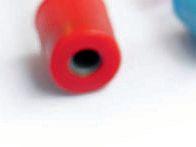


1. Monitoring only, especially for early stage, slowgrowing prostate cancer.
2. Surgery and/or radiation therapy (external beam or brachytherapy, insertion of radioactive seeds).

3. Hormone therapy (androgen deprivation therapy or ADT), especially if the tumor is large or cancer is more likely to return.
4. Chemotherapy or immunotherapy if the cancer no longer responds to ADT. Side effects may include incontinence, bone pain or weakness, and sexual problems. These can often be prevented or managed.
avoid it before any PSA test. A digital rectal exam is also used to check for prostate cancer.

In early-stage disease, symptoms aren’t usually present, but they can show up later. Symptoms can include having to pee more often, especially at night, or straining to empty your bladder; blood in your urine or seminal fluid; new onset of erectile dysfunction; discomfort or pain when sitting (caused by an enlarged prostate); or, less commonly, pain or burning during urination. Other symptoms can occur if cancer has spread beyond the prostate gland.
Should you get screened if you have no symptoms? There’s no easy answer, because it’s hard to predict which tumors will grow and spread quickly and which will grow slowly. Discuss your risks with your doctor.
Did You Know?
Prostate cancer is the most common cancer diagnosed in men in the U.S. (other than skin cancer), and is the second-leading cause of cancer death (behind lung cancer).


20 lakehealthyliving.com SEPTEMBER 2019 EDITION
HBOC Syndrome
Are you at a higher risk?
What does prostate cancer have to do with Hereditary Breast and Ovarian Cancer (HBOC) Syndrome? HBOC Syndrome relates to genetic mutations, especially in the BRCA1 and BRCA2 genes. Those mutations can mean a higher risk of getting a number of cancers, including prostate cancer. For example, a BRCA2 gene mutation can increase your chance of getting prostate cancer by 20 percent.
Risk factors include multiple HBOC Syndrome cancers on the same side of your family, a male relative diagnosed with breast cancer, and Ashkenazi Jewish ancestry. Talk to your doctor about getting genetically tested if you think you may be at risk.
Regular screenings, and genetic counseling are recommended if you test positive for mutations. Other genetic risks of getting prostate cancer include familial prostate cancer (about 20 percent of cases) and hereditary prostate cancer (about 5 percent of cases).
by the numbers
66

The average age of men when prostate cancer is detected.
60 percent
The increased prevalence of prostate cancer in black men compared to nonHispanic white men.
174,650

The estimated number of new prostate cancer cases that will be diagnosed in the U.S. in 2019
1in 9
The proportion of men who will be diagnosed with prostate cancer in their lifetime.
Too Slow to Make a Difference
Prostate cancer can grow and spread quickly, but this is not usually the case. Some prostate cancers remained hidden for years in many older (and some younger) men who eventually died of other causes. Neither they nor their doctors knew they had prostate cancer until it showed up in an autopsy.

patient perspective
Patient-centered radiation oncology close to home

The Villages 352.259.2200
Ocala 352.732.0277
Timber Ridge 352.861.2400
Inverness 352.726.3400
Lecanto 352.527.0106
RBOI.com
September 2019 21
“When you go home [after a treatment], you resume your normal everyday life…So my life, other than giving up that hour each day, didn’t change at all.”
— Bud Conklin, Prostate Cancer Survivor
us on Facebook
Like
A HEALT DEBATE ABOUT VACCIN T
THY E ES
The use of vaccinations stirs advocates, opponents, and parents who want the right to choose.
September 2019 23
Story: Chris Gerbasi
easles was supposed to be gone. Now it’s back—with a vengeance.
Through August 15, 1,203 individual cases of measles had been confirmed this year in 30 states. This is the greatest number of cases reported in the United States since 1992 and since measles was declared eliminated in 2000, according to the Centers for Disease Control and Prevention (CDC).
The outbreak is significant not only for the public health threat it poses but also for the debate over vaccinations it has reignited. Measles is a highly contagious viral infection that can cause fatal complications and is especially serious for young children. For most doctors, there is no debate. Vaccines prevent measles and other illnesses, they say, armed with scientific studies validating the safety of vaccinations.
Some doctors and parents, however, maintain that vaccines can cause developmental disorders and illnesses, and say they have the data to back that up. While they generally are dubbed “anti-vaxxers,” more accurately, they favor parental choice. Parents may alter vaccination schedules for their children, accept some shots and not others, or avoid vaccines all together.

One area of agreement in the debate is that more public education is needed, and many parents in Lake and Sumter counties are doing their homework on vaccine safety.
ADVOCATES FOR VACCINES
Dr. Valerie Thomas doesn’t mince words about the importance of vaccinations.
“Vaccines save lives,” the Tavares pediatrician says. “Unfortunately, I have seen children die from vaccinepreventable diseases, including influenza, meningitis, pneumonia, whooping cough, and chickenpox. I have never seen a child die from a vaccine and I have never even talked with a physician who has seen a death from vaccine. Receiving the vaccine is fantastically safer than getting the disease.”
Dr. Thomas, who has been practicing for 31 years, also says she has never seen any permanent side effects from vaccines. Any vaccine potentially can cause side effects. The only side effects she generally sees are minor muscle soreness or a rash around the injection.
The CDC recommends vaccinations for children and adults at various times depending on their age and health conditions. When a vaccine is administered, it stimulates the immune system so it can recognize the disease and protect the body from future infection, thus immunizing the recipient.
A decision to not immunize puts people at risk of illness, states the CDC, which reports that the majority of people who got measles this year were unvaccinated.
Dr. Thomas says once viral or bacterial diseases are established in the body, it’s often too late to treat them effectively and prevent permanent damage or death.
“One of the things that vaccine refusers say is, ‘If my child gets the disease, then we will treat it.’ What they don’t realize is that all of the diseases against which we vaccinate are difficult or impossible to treat once the illness occurs,” the doctor says. “The best way to treat a disease is to prevent one from getting it, and that is what vaccines do.”
Many of today’s fears about vaccines are rooted in a 1998 study of 12 children led by Dr. Andrew Wakefield, a British gastroenterologist. The study purported to show a relationship between the measles-mumps-rubella (MMR) vaccine and the development of autism. The MMR vaccine is recommended between 12 and 18 months of age, which coincidentally is when signs of autism may first become evident.
The study was discredited after multiple follow-up studies refuted the results, according to National Library of Medicine reports. Ten of the 12 authors of the study retracted their findings, saying no causal link was found between the vaccine and autism.
Still, fearful comments about vaccine side effects continue to spread on the internet and social media, says Dr. Eugene Tan, a Leesburg pediatrician.
“Most of them are really unfounded,” he says. “A lot of studies prove that no vaccine did cause autism or any major neurological side effects. There’s no proof, really.”
He encounters a few patients who are opposed to vaccinations and tries to explain his views.
“I’ll tell them that vaccine is still the safest way to go rather than risking their child to illnesses, but again, if they already have a preconceived idea, sometimes it’s hard to convince them,” Dr. Tan says.
24 lakehealthyliving.com
Some parents are concerned about the number of shots children must receive, but research leading to new vaccines has created the increase, he says. For example, 20 to 30 years ago, doctors didn’t have the pneumococcal or the Hib (Haemophilus influenzae type b) vaccines, and since the introduction of those vaccines, the incidence of those illnesses has decreased significantly, he says.
Mandatory vaccination is necessary to maintain “herd immunity,” says Dr. Paul Ehrmann, an osteopathic family physician in Royal Oak, Michigan. Some people can’t be vaccinated due to medical conditions, so keeping the rest of the population vaccinated protects those who are vulnerable.
“Some diseases, like measles, require as much as 95 percent of the population to be vaccinated in order to achieve herd immunity,” he says.
Dr. Ehrmann, as well as Drs. Thomas and Tan, stresses better education for parents. In Michigan, a public information campaign launched in 2017 has significantly improved vaccination rates, according to the American Osteopathic Association.
“It’s up to us to try to protect the public health,” Dr. Ehrmann says. “The way that you do that is trying to educate patients on the advantages of the shots and give good, scientific, evidence-based information, and that’s all we can really do. The rest of it is up to the patient.”
VOICE OF THE PEOPLE
Which statement best represents your views on vaccines?
Safe and effective
51%
Benefits outweigh risks of side effects
31%
Unsure whether vaccines are safe and effective
9% Risks of side effects outweigh benefits
6%
Unsafe and ineffective
2%
PARENTAL CHOICE
Don’t call them “anti-vaxxers.” Some parents who choose not to have their children vaccinated say they’re not completely “anti-vaccination” but rather “pro-choice.” They believe parents should have the right to decide for themselves about vaccines—which ones, when, and how many.
“What people want is the truth and they want to be heard and acknowledged and they want a choice,” says Dr. Cornelia Franz, founder of the Franz Center pediatric practice in Orlando.
Dr. Franz’s truth is that not only are vaccines harmful, but they also don’t work. She points to recent outbreaks of illnesses and adverse incidence statistics from reporting sites. Despite that, her practice offers both alternative and traditional medicine, which includes vaccines.
She often hears about parents’ previous bad experiences.
“Parents have told me the same story over and over: that their child was fine and then 24 hours later or a few days or a week (after a vaccine), the child has lost eye contact, won’t talk, has had neurologic regression,” she says.
“Now, people might say, ‘You can’t prove the vaccine caused it,’ and I say, ‘You can’t prove it didn’t,’” she adds.
One of Dr. Franz’s biggest concerns is the number of shots given to children in a short timeframe. In the past 30 years, the recommended number of vaccinations has quintupled, she says.
The CDC schedule calls for up to 35 doses by the age of 10 and another 11 doses by age 18 for a total of 46 potential doses for 15 different vaccines. But to reach that total, a child would need to have multiple high-risk factors or special health conditions that necessitated all of the shots.
In Florida schools, students are required to have up to 21-24 doses for six different vaccines from

September 2019 25
Source: Harris Poll of 2,007 people conducted in May for American Osteopathic Association
FAST FACTS
Since 2003, nine CDC-backed studies have found no link between the MMR vaccine and autism, and no link between vaccines containing thimerosal, a mercury-based preservative, and autism.
No increased risk for autism after MMR vaccination was found in a study of 657,461 Danish children published in April in the Annals of Internal Medicine. Immunization saves 2 million to 3 million lives each year worldwide, the World Health Organization estimates.
kindergarten through 12th grade, according to the state Department of Health. Children can receive waivers from vaccines for medical and religious reasons.
Dr. Franz says the chance for medical errors increases with the number of drugs someone takes.
“If you’re getting this many vaccines, you have a much higher risk of having an adverse event. It’s common sense,” she says.
In her early years in practice, Dr. Franz says she didn’t know what was in vaccines until someone asked her and she started researching. She says vaccine ingredients such as aluminum, formaldehyde, glutaraldehyde, monosodium glutamate, and polysorbate can cause health problems.
“I’ve been in practice a really long time (since 1985) and I have seen a lot of children who had very severe reactions to vaccines and had some permanent disabilities,” she says, noting fainting, seizures, and hyperpathia reactions, a clinical symptom of certain neurological disorders.
Adverse reactions can be reported to the Vaccine Adverse Event Reporting
MOST UNWANTED LIST

Vaccines are available for these dangerous diseases, according to the Centers for Disease Control and Prevention:
Chickenpox, diptheria, flu, hepatitis A and B, Hib (Haemophilus influenzae type b), HPV (human papillomavirus), measles, meningococcal, mumps, pneumococcal, polio, rotavirus, rubella (German measles), shingles, tetanus, and whooping cough (pertussis).
DO YOUR HOMEWORK
These websites provide immunization information:

• American Academy of Pediatrics: aap.org/immunizations

• Centers for Disease Control and Prevention: cdc.gov/vaccines
• Florida Health: thepowertoprotect.org
• Immunization Action Coalition: immunize.org
• Shot at Life: shotatlife.org

26 lakehealthyliving.com
System, a government website; however, VAERS is not an investigative service that determines cause and effect.
For parents who claim vaccines have harmed their children, the National Vaccine Injury Compensation Program (VICP) is a no-fault alternative to civil litigation. The VICP reports that since 1988, more than 6,600 petitioners have received awards totaling about $4.1 billion.
However, about 70 percent of the awards come from negotiated settlements in which the Health and


Human Services Department did not conclude that a vaccine caused the alleged injury, according to the U.S. Health Resources and Services Administration.


Outbreaks of illnesses also demonstrate the ineffectiveness of vaccines, Dr. Franz says. For example, outbreaks of whooping cough, or pertussis, were reported during 2012-13 in Wisconsin, Vermont, Washington state and elsewhere. The CDC indicated that a majority of cases involved vaccinated children—only about seven of 10 kids
are fully protected five years after getting their last dose of DTaP (diptheriatetanus-acellular pertussis) vaccine. That’s why Tdap, with reduced doses of the diphtheria and pertussis vaccines, is used as a booster shot for adolescents starting at age 11.
Dr. Franz encourages parents to do their own research. Judy Michaux, of Clermont, says she’s a faithful researcher who stopped immunizing her children after finding Dr. Franz.
“She said, ‘Listen, all you have to do is a blood test. If they already have the immunities, you don’t need to keep immunizing,’” Judy says. “It doesn’t make any sense to inject them with all the extra stuff if they already have the immunities.”
Together, Dr. Franz and parents discuss research and choose a course of action. Some parents still want to vaccinate, and her practice supports parental choice and offers a slower vaccine schedule.
“Most people are not opposed or antivaccine, it’s like, if they’re going to do it, make them safe, because at this point, the evidence shows they’re not safe,” Dr. Franz says.
September 2019 27
“MOST PEOPLE ARE NOT OPPOSED OR ANTI-VACCINE, IT’S LIKE, IF THEY’RE GOING TO DO IT, MAKE THEM SAFE, BECAUSE AT THIS POINT, THE EVIDENCE SHOWS THEY’RE NOT SAFE.”
— Dr. Cornelia Franz
DR.FRANZ’SQUESTIONSFORPARENTSTOASKDOCTORS:
• Can I vaccinate on a slower schedule?
PARENTS’ VIEWS
Heather Gingrasso and her husband, Chris, generally get all the recommended vaccinations for their children, Kaitlyn, 18, Nathan, 12, and Micah, 6, along with a foster baby girl. But they don’t get voluntary vaccinations, including flu shots, and Heather supports other parents’ views.
• Do you know what’s in the vaccine and what the ingredients do?
provides information about safeness and side effects.
Brylee has never had a reaction or complication from vaccines, and Athena, a sergeant with the Sumter County Sheriff’s Office, doesn’t fear for her safety. But she says she understands that vaccines may not be as safe for
• Can I get blood tests to indicate immunity levels?
“As we continued to research, we felt that the effects of vaccinations were more harmful for our child than helpful,” Robin says.
As a toddler, their son was hyperactive and had difficulty making eye contact, but he grew out of those traits, she says.
“However, I do believe that he would be a very different person if we had continued his vaccinations,” she says. “Because of our journey with our oldest child, we did not have our other three children vaccinated.”
Those three children are healthy. The parents stay aware of possible threats from disease and treat their kids accordingly.
“My husband and I honestly aren’t against vaccinations,” Robin says, “but we are against so many vaccinations at a young age and vaccines that seem unnecessary.”
— Heather Gingrasso
“I think vaccinations are important to help protect our children from diseases that could be a life-or-death situation,” says Heather, of Clermont. “However, I think every parent should have a free choice to vaccinate or not.”
Heather prefers to spread out vaccinations—her doctor allows her children to get one injection per visit— because she has fears about side effects.
“I have only experienced fever, rash, and irritability with my children,” she says, “but it makes me wonder what is going on inside of them if this is what is manifesting outside of them.”
Athena Ross and her husband, Michael, have a daughter, Brylee, who is in preschool and turns 5 in September. They always get the vaccines recommended by their pediatrician, who
other children who have serious medical conditions or allergies.
“Now I am not saying that it is easy to make her get the multiple shots, because it is hard to watch her get a shot in every appendage—last visit she had a shot in both arms and legs, which was awful because she cried,” Athena says. “But if it keeps her from getting a disease that could have been prevented, (getting a disease) would be even worse, in my opinion.”
Robin Miller, of Clermont, and her husband had their first child in 2000 and planned to keep his immunizations up to date. But during his first year, he had reactions to shots that included labored breathing, agitation, trouble sleeping, fever, and a seizure, she says. So, they stopped the shots.
Judy Michaux saw differences between vaccinating her first two children and not vaccinating her next two kids with her second husband, Kurtis, a Clermont chiropractor.
Brittny, 31, and Tyler, 24, received vaccinations for chickenpox but then got extreme cases of the disease. She stopped vaccinating Tyler at age 10 and instead used blood tests to check his immunities. Emma, 14, and Kai, 11, have not been vaccinated and have not suffered any serious illnesses.
Though Judy fears there is an autism link, she’s not completely against vaccines and she does her homework on the subject. She believes breast-feeding helped immunize her two youngest children and she also credits a healthy lifestyle and diet after marrying Kurtis.
“There are better ways to give your children the natural immunities that they’re supposed to have,” Judy says.
28 lakehealthyliving.com
“I HAVE ONLY EXPERIENCED FEVER, RASH, AND IRRITABILITY WITH MY CHILDREN, BUT IT MAKES ME WONDER WHAT IS GOING ON INSIDE OF THEM IF THIS IS WHAT IS MANIFESTING OUTSIDE OF THEM.”
STICKING TO A SCHEDULE
Here are answers to common questions provided by the American Academy of Pediatrics:
Q: How are the timing and spacing of shots determined?
A: Scientists study what age a child’s immune system will provide the most effective protection after receiving a vaccine and when they are most at risk for each disease.
Q: Why are three or more doses of some vaccines needed?
A: It depends on how long a vaccine provides protection. They are spaced out over a period that gives children the best protection.
Q: Can shots be spread out over a longer period?
A: This would leave a child unprotected for a longer time. Babies are more likely to get very sick from vaccine-preventable diseases, so vaccinating them following the recommended schedule works best with the child’s immune system. Spreading out shots has not been scientifically shown to be safer or offer the same protection.
Q: Do multiple shots in one visit overwhelm a child’s immune system?
A: No. Children are exposed to more germs every day just by playing, eating, and breathing than what is in any combination of vaccines.
A MOTHER’S FEARS ABOUT AUTISM
When Traci and John Sickels’ first child, Dallas, was diagnosed at age 5 with autism spectrum disorder, they grasped for reasons.
“We figured it had to be genetic triggered by some environmental cause,” says Traci, a teacher at Minneola Charter School. “In the news media, vaccines as a cause of autism was very popular, and we had no idea what the truth was.”
A 1998 British study claiming a link between vaccinations and autism stoked worldwide fear, though it later was retracted and no scientific studies since have proved any connection.
When the couple’s daughter, Presli, came along around 2008, their vaccine-autism concerns remained. Dallas had received 21 vaccines by age 2 and 30 by age 5. By the age of 6 months, Presli already had received 15 shots.
“This is when I decided, ‘No way am I going to put another child through this!’” Traci says. “I just felt this was an overload to her system.”
The couple stopped giving Presli her shots and put her on an adjusted vaccination schedule until age 5. They were living in Arkansas at the time and were able to obtain a state waiver for her shots based on philosophical reasons, Traci says.
“Once I stopped vaccinations, I felt relieved and watched my child make great strides with no delays,” she says.
Dallas had started showing signs of autism at 3. He received two MMR (measles-mumps-rubella) vaccines within 13 months of each other, at ages 1 and 2. After the second shot, Traci and John noticed that he started to change drastically and stopped speaking.
That was one reason they delayed Presli’s vaccine schedule. When Presli started to speak clearly at 3, the couple felt she was in the clear and started her on a modified schedule to prepare for school: one vaccine at a time and never more than one injection per visit. Many booster shots were no longer needed by that age, so she received about 10 fewer shots. She received the MMR vaccines at ages 7 and 8.
Traci acknowledges that she has only opinions about vaccines and no medical background. But she still is not 100 percent sure that vaccines didn’t affect Dallas, now 18, while Presli, 11, has been healthy with far fewer vaccinations.
“I could have been a crazy, scared parent but I was trying to be cautious, and having one child having autism scared me,” Traci says. “I didn’t want to be the cause of another child having autism because I gave her vaccines.”





















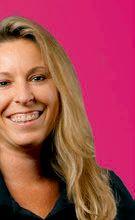









































































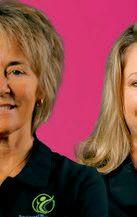




























































































































































































































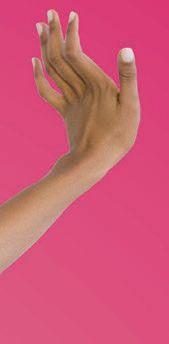



























































































































































































































































































































































































































































30 lakehealthyliving.com Follow Unova Health Clinic on Facebook for more information. 539 Rolling Acres Road | Lady Lake UnovaHealth.com Getting You Moving the Way you were Meant to Move Orthopaedic Clinic M-F 8:30am-4:30pm (352) 973-4070 Urgent Care M-F 8:30am-4:30pm (352) 460-1652 TREET WELLNESS NEED MORE 352.357.7244 • BayStreetWellness.com 2430 South Bay St., Eustis Dr. Kimberly Besuden Dr. Lauren Cooper your Journey to Wellness assessment: • Personalized treatment plans • Peak performance for professional and amateur athletes • Blood Sugar & Weight management • Support for Thyroid and Adrenal issues • Support for Digestion issues Visit us online for information on our CHIROPRACTIC • FUNCTIONAL MEDICINE MASSAGE • SKINCARE • ACUPUNTURE ONE SMALL CHANGE CAN AFFECT YOUR WHOLE LIFE.
Central Florida Plastic Surgery

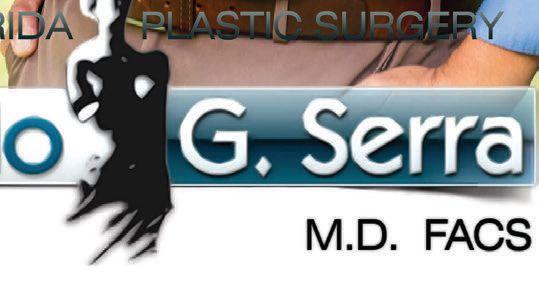







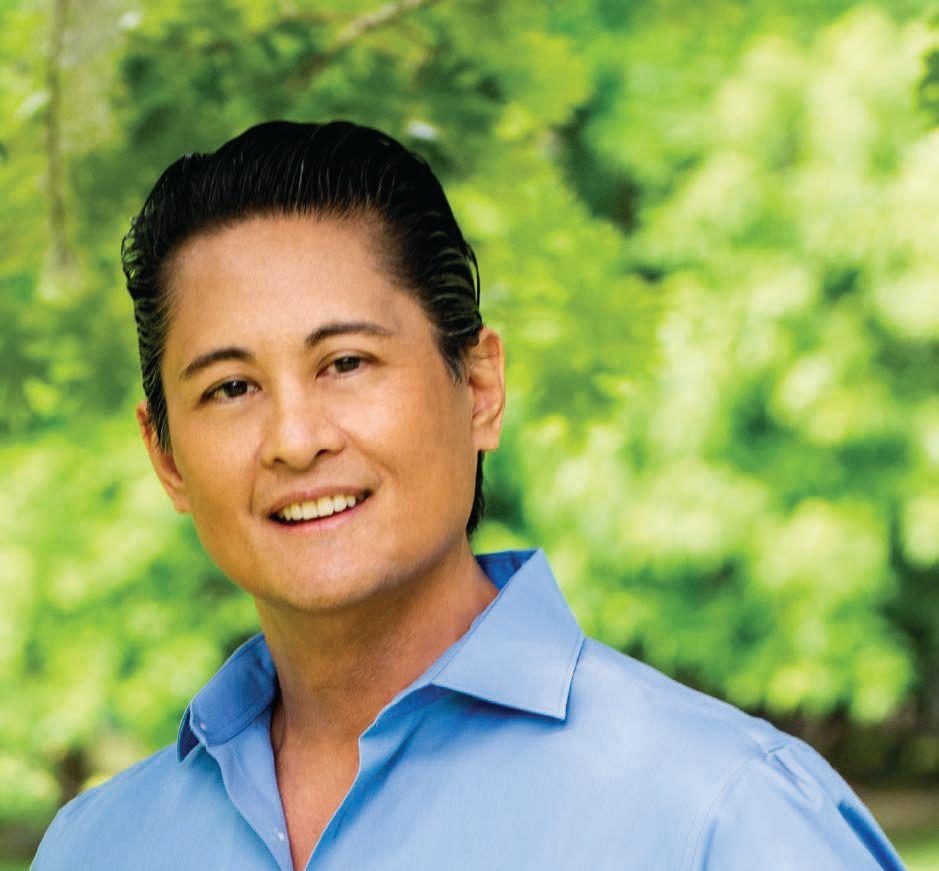
Celebrating 21 years (1998-2019)
Specializing in:





• Mini Face and Neck Lift with Smartlipo of Neck and Jowls
• Xeomin/Botox/Belotero/RadiesseFacial Enhancements
• Direct Neck Lift
• Torn Earlobe Repair
• Smartlipo (Laser Assisted Liposuction)




• Abdominoplasty (Tummy Tuck)
• Arm Lift
• Thigh Lift
• Body Contouring After Weight Loss
• Breast Augmentation



• Breast Reduction and Lift

• Skin Cancer Removal and Reconstruction



‘You’re NOT alone’







Student ambassadors aim to erase the stigma of mental health issues among their peers, thanks to Be Free Lake training.
Story: Theresa Campbell

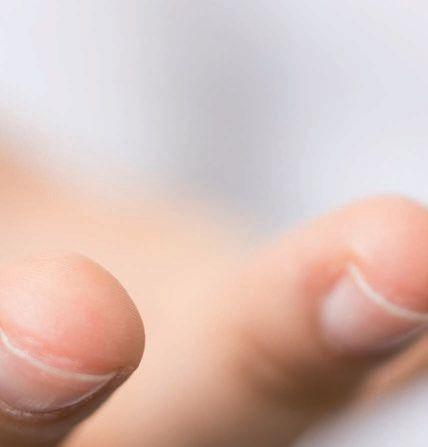


Seth Sutherland was 17 when he shot and killed himself nearly two years ago at Lake Minneola High School. His death has prompted 49 (and counting) students to become mental health ambassadors, trained to recognize and help any peers who are facing anxiety, depression, or sadness.
Lake Minneola High School hosted the You’re Not Alone pilot program in the spring for youth mental health and suicide prevention training. The program was organized through Be Free Lake, a substance abuse and violence prevention coalition based in Mount Dora, and aided by a grant from the Women’s Giving Alliance, a foundation based in Jacksonville. The program is slated to return this fall.
Through the program’s five training sessions, teen ambassadors were taught to recognize and refer those in need of help to appropriate adults and resources.
“One in four teens is dealing with some sort of mental health issue, and suicide is the second-leading cause of death for teens, behind vehicle tragedies. And when you think about it like that, it’s major,” says Christopher Lujan, coalition administrator for Be Fee Lake, and one of the program instructors along with Kevin Pokorney and Dr. Candace Booth.
“We’re happy that Lake Minneola is being proactive,” adds Christopher, praising the support of the faculty in recommending students for the training.
32 lakehealthyliving.com
“Young people will typically go to another young person; these ambassadors are taught to recognize warning signs,” Kevin says. “The more eyes and ears we have, the better.”
Eventually, the goal is to get You’re Not Alone into more schools.
Christopher expects Lake Minneola High School to have 90 ambassadors at the one-year mark of the program. Parents are getting involved, too, through a companion youth mental health first aid program, part of a national-level certification process from an eight-hour class that prepares parents when a child comes to them and says, “I’m feeling stressed or I’m feeling depressed.”
The teen ambassadors told the Be Free Lake instructors they recognize anxiety and depression as serious concerns.
“They know how big the issue of suicide is with the teen community, and they all identified that they want to be that person to help their fellow classmates out,” Christopher says.
SIGNS OF DEPRESSION IN TEENS




Did you know?
1 in 4 teens suffer hopelessness.
1 in 5
teens ages 13-18 have a mental health condition.
“These kids have compassion,” Kevin adds. “Many said they had friends that they were concerned about. This program teaches them what is depression, what is it like? Anxiety, and what is that about? What do I do when I’m feeling blue? What music do I listen to to lift me up? This gives them tools to help them as well as others. One of the strong points in the program is we teach mindfulness, which makes them say, ‘OK. What am I feeling?’”
Photos of the ambassadors are on the school walls. They also make public service announcements at the school and sporting events to help erase the stigma of mental health issues.
Half of all mental illnesses begin by age 14
8% of teens suffer anxiety disorder.
“Basically, what we do is we train them to have a little bit of empathy and promote social awareness; to be that person identified as that individual anyone can feel comfortable coming to,” Christopher says.
From there, the ambassador refers individuals in need of help to counselors and other resources.
“It’s really closing that gap,” he adds.



WHAT YOU CAN DO
• Sadness or hopelessness
• Irritability, anger, or hostility
• Tearfulness or frequent crying
• Withdrawal from friends or family
• Loss of interest in activities
• Changes in eating and sleeping habits
• Restlessness or agitation
• Feelings of worthlessness or guilt

• Lack of enthusiasm and motivation
• Fatigue or lack of energy
• Thoughts of death or suicide
70% of youths in the juvenile justice system have a mental illness.
If you think someone has a mental health issue:

9 out of 10 youths who died by suicide had an underlying mental illness.
Suicide is the second-leading cause of death among youths ages 10-14
Sources: National Institute of Mental Health, Centers for Disease Control and Prevention, and National Alliance of Mental Health
•

• Offer support. Let the person know you are there for them.
• Be gentle but persistent.
• Listen. Don’t lecture. Do not judge and do not offer unsolicited advice.
• Validate feelings. Acknowledge what the person is thinking or feeling.
September 2019 33
••••• ••••• ••••• ••••• ••••• •••••













34 lakehealthyliving.com CO MMER C IAL C LEANIN G SERVICES FOR: BANKS DOCTOR’S OFFICES PROFESSIONAL BUSINESSES PROPERTY MANAGEMENT CLEANIN G SERVICES ALSO INCLUDE: FLOOR MAINTENANCE CARPET CLEANING WINDOW CLEANING CLEANING SUPPLIES: PAPER // CHEMICALS // EQUIPMENT PROUD MEMBER OF: Free Estimates // Licensed & Insured UltimateContractCleaning.com danucc@aol.com CALL TODAY 352.753.8653 WHEN CLEAN JUST ISN’T CLEAN ENOUGH. DISABILITY CONSULTANTS 352.326.5009 Are you under 65 and unable to work? 101 E BERCKMAN ST, FRUITLAND PARK 1020 NE 8TH AVE, OCALA ALSO OFFERING HELP WITH MEDICARE INSURANCE CHRIS BELL, A.D.R. + JEFF BELL, A.D.R. HEARINGS ARE HELD IN OUR OFFICE!
Specialist offers tips








Dr. David Brodner, a world-renowned sleep specialist whose two studies were presented at the 2019 SLEEP Conference (a joint meeting between the American Academy of Sleep Medicine and the Sleep Research Society), says a growing number of Americans are suffering from sleep deprivation. In fact, the number has almost reached epidemic proportions.
He offers these tips for better sleeping:








• Prepare for bedtime: Create a routine to help your body unwind from the stress of the day.

• Disconnect from electronic devices: needs to recharge during the night, so unplug. Find other ways to relax in preparation for sleep.


• Set the stage: Prepare your room as if it were a sanctuoutside noise can go a long way.
• When needed, consider taking a melatonin suppleThis is the body’s natural sleep ingredient and is available as an over-the-counter solution.
Dr. Brodner’s studies confirmed that a continuous release and absorption of melatonin helped more than 78 percent of study participants go to sleep and remain asleep more than seven hours.
35
A lifetime of pearly whites
Be sure to brush up on your child’s dental health needs. No matter what age, the mouth is the front door to the entire body. Everything we eat or drink comes into the body through our mouth beginning at the moment we’re born and the umbilical cord is cut. All nutrition now enters the body through







Along with nutrition, bacteria and other particles also enter the body through the mouth. Many of these bacteria are necessary and help keep our body healthy. Some of these bacteria are harmful and cause diseases within the body. When a baby is born, he or she doesn’t even have the bacteria in their mouth that cause cavities. The baby picks up these bacteria from mom, dad, brother, sister, and even the dog. We live with bacteria all around us. If anyone who kisses or shares a spoon or a cup with the baby has gum disease or cavities, these and multiply like rabbits.
cavities begin. Cavities are caused by acids from the






















lake
bacteria dumping on the teeth. More
Once the acid eats through the tooth, the bacteria get to the nerve and then into the bloodstream. These cavities
Now the bacteria are traveling in the bloodstream through the entire body. There is a good chance there will be

(bacteria coating) from the teeth every


You can’t do it in 30 seconds. To do it right takes time. For a teenager or ve to seven minutes to











































tablets (available at amazon.com or yourfilthymouth.com/shop) to make the age of 6, they should be able to properly clean their teeth on their own.
frequently, just as you check yourself, with disclosing tablets. Kids learn from what parents “do” more than























competition with prizes. The habit
of excellent personal dental care can save thousands of dollars, help people avoid missed work or school with toothaches, decrease the risk of cardiovascular disease, diabetes and other debilitating diseases, and help ensure a nicer smile. A nicer smile opens many doors—all from the healthy habit of daily, complete home

If a baby tooth has a cavity, why





Here’s why: Baby teeth serve three
First, they allow the baby to chew more solid food. We need teeth to cient nutrient uptake and to prevent intestinal blockage.
Second, baby teeth help in developing speech. Certain sounds require teeth. Without teeth, proper speech development may be delayed or permanently altered.
Third, baby teeth maintain the space for the erupting adult tooth underneath. If the baby tooth is lost too soon, the teeth around it usually drift, blocking out the space for the adult tooth that is still forming under the gum. If the crooked teeth are not corrected with orthodontics, there can be bite problems, gum issues, and future dental challenges and expenses.
A dentist can train parents to properly clean their children’s teeth, along with checking for cavities or other issues. You can’t leave brushing up to young children. They need instruction and practice.
The money spent preventing cavities and premature loss of baby teeth will pay for itself many times over. The time invested in dental health today will save thousands of dollars and help avoid many diseases in the future. Dental care is not expensive. Dental neglect is very expensive! It’s a choice.
September 2019 37
Dr. Charles Reinertsen operates his dental practice at 215 E. Burleigh Blvd. (Highway 441), Tavares. To learn more, call
When a baby is born, he or she doesn’t even have the bacteria in their mouth that cause cavities. The baby picks up these bacteria from mom, dad, brother, sister, and even the dog. We live with bacteria all around us.
Healthy snacks
Sneaking in an extra serving of fruit will not be hard with these treats.

Recipes:
THE HULK SMOOTHIE DIFFICULTY: EASY



INGREDIENTS
spinach (fresh)





kiwi (peeled)


¼ - ½CUP





coconut or organic yogurt
unsweet vanilla almond milk
pure pomegranate juice
ice cubes
DIRECTIONS


Blend till smooth and serve.

38 lakehealthyliving.com
















) September 2019 39
Chest exercises with Vilma Rosario
Pushups
• 1- Start: Hands under shoulders. Core tight, back flat, slowly lower yourself until your chest hits the ground.

• 2- Finish: Chest hits the ground while core stays engaged.
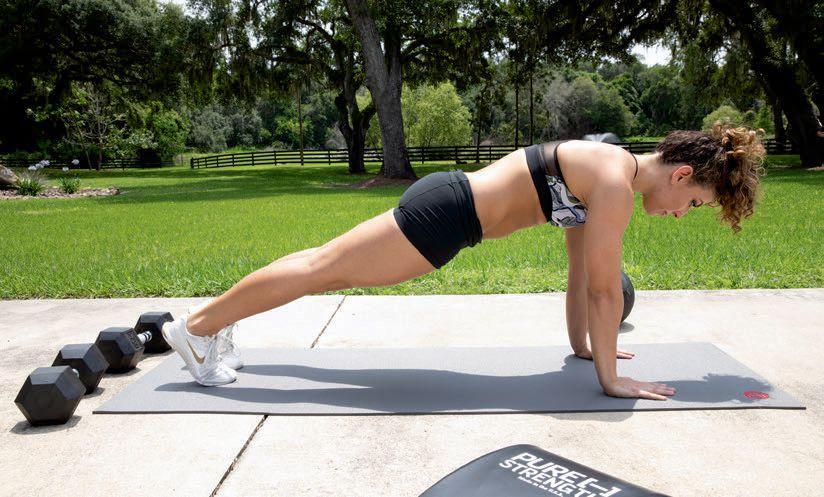
40 lakehealthyliving
.com
Photos: Anthony Rao
Modified pushups
• 1- Start: Start with knees on the ground and hands under shoulders, engage core and slowly lower yourself with control to the ground.

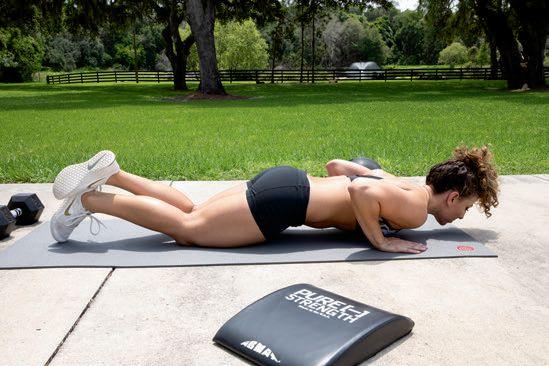
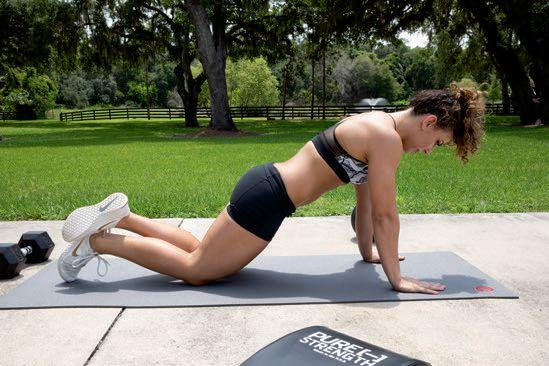
• 2- Finish: Chest hits the ground and core is still flat and avoid arching.
Pike pushups
• 1- Start: Legs can be straight or bent. Hands are out in front of your head.
• 2- Finish: Slowly lower yourself until your forehead is between your hands.

September 2019 41
Take a shine to health
Anytime is a good time for maintaining healthy habits.
Story: Dr. Keith Kantor





























Our eating habits for the summer months compared to the rest of the year should change a little. Summer is a great time to eat fresh fruits, vegetables, and herbs. Always try to eat foods that are in season, watermelon and cucumbers are hydrating, tomatoes, peppers, and fresh herbs can be incorporated into salads for a light meal. Summer tends to be a time when we get lazy and may end up eating more unhealthy convenient foods like ice cream, hot dogs, and fast food, simply because we are busy outdoors and not on our regular routine of eating dinner at the same time each day. However, living in Florida means there’s access to fresh fruits and vegetables all year long.
Healthy snacks should be offered to children to promote healthy choices. Offer them fresh fruits and vegetables and make homemade smoothies with yogurt, fruit, leafy greens, and coconut water. Since kids tend to eat similar items in school lunches during, get them involved with cooking on weekends and try new healthy recipes to give them exposure to new foods.

Avoid sugary sweets like Italian ice, ice cream, sodas, and fast food. These options will deplete energy and may cause weight gain or decreased performance if they are involved with sports.



It is important to eat meals at regular times, but I think as long as the options are healthy, the schedule can be loosened during busy times. Toddlers and preschool-age children may need their normal scheduled snacks and meals, but older children can eat when they are hungry or break from outdoor activities.

Water intake should be increased as long as the weather is hot. Aim to drink at least half your body weight in water per day. Avoid drinks such as juice and sodas because they are loaded with unhealthy sodium, sugar, and in some cases, dyes. I prefer Hydroxide quality water. The best Hydroxide Alkaline water I found through my research is AQUA OH! It is all natural and made from limestone. Encourage your kids to aim to consume at least five servings of fruits and vegetables per day, limit sugary foods, and stay hydrated in the heat. Plan healthy meals ahead of time to avoid making unhealthy decisions on the go. This is good advice for the entire family, not just the kids.
WRITER → Dr. Keith Kantor is a leading nutritionist and CEO of the Nutritional Addiction Mitigation Eating and Drinking (NAMED) program.Needs

ABOUT THE
42 lakehealthyliving.com
We have highly skilled clinicians dedicated to all aspects of managing your home care safely and effectively.

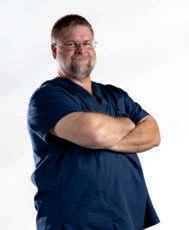

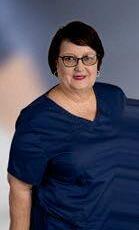



Skilled Nursing (RN, LPN)










Physical Therapy
Occupational Therapy
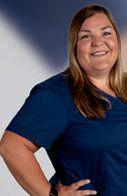
Speech Therapy
Certified Nursing Assistants







Medical Social Services
Medicare Assignment Accepted
Private insurance Accepted with Pre-Authorization


For more information about our services, staff and quality of care, contact us:





310 Market St., Leesburg, FL 34748

Phone: 352.315.0050 | Fax: 352.315.0059
HHA299992424
LAKE CENTRE HOME CARE
Meet some of our team.
L-R: Ashley Bailey, RN; Jackie Stanfield, RN; Haley Smith, RN; Kelly Staab; Chrissy Nichols, COTA; Shanitia Brown, LPN; Steve Van Dyke, DPT; Jenny Stinson, PT; Renee Piryk, PTA; Kristin Coons, RN; Bailey Treves; Pam Balthaser, CNA; Ashley Tatum, LPTA; Cindy Bahoot, PTA
KNOW YOUR BUILDER


“Designing and building a custom home is a long process. A thousand decisions need to be made, one just as important as the next. The first decision you need to make is to hire the right builder with the right experience. Don’t underestimate the importance of the relationship with your builder. American Family Homes is Committed to Quality and 100% Satisfaction. We invite your inquiry today.” -









 Mike Neace
Mike Neace






AMERICAN FAMILY HOMES “Committed to Quality & Satisfaction” OFFICE / DESIGN STUDIO 312 South Bay St., Eustis FL 32726 www.AmericanFamilyHomesInc.com State License Number - CBC058306
styles such as Modern Farmhouse and Craftsman is perfectly fine and something we already do.
style is more contemporary
your ideas
will
features to create an energy efficient custom home, within
you
BLENDING TWO
Maybe your
or traditional. Bring us
and we
collaborate on style, color and design
budget, just the way
want it
www.AmericanFamilyHomesInc.com Let’s get started. Call today. Mike Neace: 352-589-6004 Award Winning Home Designer / Builder / Licensed Contractor CUSTOM HOMES FROM THE $200s to $1M BUILDER OF THEYEAR HOME BUILDERS ASSOCIATION OF LAKE-SUMTER

















45
When technology outstrips biology
Misinformation in the information age can be hazardous.
Story: Dr. Richard T. Bosshardt
Our technological age has fed us several myths that, if not recognized and dealt with, will negatively impact our health, both individually and as a nation. We ignore these at our collective peril. Several are below. You may have a few more of your own.
WE SHOULD BE ACCESSIBLE 24/7
No one needs to be available 24/7, not even doctors. Turn off your cellphone and shut off the email for a weekend. The Earth will continue its orbit around the sun, the world will stay a mess, and your family and friends will survive without you for a couple of days. Everyone needs to go “off the grid” now and then.
TECHNOLOGY ALLOWS YOU TO CONTROL YOUR DAY
Our bodies have a natural, internal clock. Ideally, we are awake during the day and sleep at night. Many jobs involve working shifts that alter the day/night cycle. While we can adapt to an altered sleep schedule, this takes time and should not be constantly changing, for example, people whose shift hours change weekly or even monthly. To do otherwise leads to fatigue, excessive daytime sleepiness, accidents, and, eventually, health problems and illness.


TECHNOLOGY HAS IMPROVED FOOD PRODUCTION AND DELIVERY
Most of our food is provided by high-tech factory farms, pre-prepared from processed ingredients, and tend to be high in sugar, salt, and/or unhealthy fats. We add flavorings, preservatives, stabilizers, and other chemicals that were not intended for human consumption. It isn’t a coincidence that we have epidemic obesity and chronic illnesses that show no sign of abating. There is a growing movement back to fresh, locally sourced foods. I always fall back on author Michael Pollan’s simple advice: eat food, mostly plants, not too much.

TECHNOLOGY HAS IMPROVED COMMUNICATION
This is true only if you believe that real communication consists of tweets, texts, tags, emails, and posts on Instagram or Snapchat. With digital communication, we lose inflection, voice tone, emphasis, emotion (and, no, emoticons don’t count!), facial expression, and body language. Often, these convey more information than what we are actually saying.

46 lakehealthyliving.com
HUMANS ARE NATURAL MULTITASKERS

Research has shown that our brains are really not capable of two or more tasks at the same time because many tasks require using the same area of the brain. Think of two people trying to type different reports on the same keyboard simultaneously. Exactly. What we are good at is jumping back and forth rapidly from task to task. Many people take on too many tasks at one time. The trick is to balance one’s abilities to the number of tasks. To do otherwise is a sure path to frustration, stress, and poor-quality work. Rather than focusing on multitasking, we should learn to prioritize tasks, organize our work/home space for maximum efficiency, and learn when to say no to another task.
VIRTUAL REALITY WILL EVENTUALLY MAKE REAL-LIFE EXPERIENCES IRRELEVANT

Multiple generations of writers, philosophers, and naturalists have attested to the healing power of nature. Throughout history, people have found healing in the wilds of our planet. Why should we care about the loss of coral reefs in Australia or the rainforest in the Amazon? Why worry about threatened creatures, such as Florida panthers, black bears, and manatees? First, when these are gone, they are gone forever and with them whatever benefits we might ever have derived from their existence. Second, if we have learned anything about our planet it is how interconnected everything is. We need the real world. We need to get away from human environments periodically and experience nature, real nature, on its own terms. Go outside and take a walk, watch a sunset, turn over some dirt and plant something. These feed our soul.
YOU CANNOT HAVE TOO MUCH INFORMATION
This is perhaps one of the biggest lies of all. We have access to more information than ever, but much of its accuracy is suspect. Take medicine, for example. The old paradigm was for new medical information to be reported in medical journals where it could be evaluated, critiqued, and vetted by physicians before being released. The new paradigm is for new treatments, products, and procedures to be promoted in the media before they are properly studied, and their efficacy and safety verified. The internet promotes more quackery in one year than all the snake oil salesmen who ever lived. I take everything I read on the internet with a healthy dose of skepticism, unless I am sure of the source.

No, I am not a Luddite. I have a cellphone, computer, wireless, etc., etc. Technology makes some aspects of my life better but there are many ways it has made things more complicated and stressful. The secret is to stay mindful, not to get sucked into it all. Use it where it helps, eliminate it where it hurts.
ABOUT THE WRITER → Dr. Richard T. Bosshardt received his medical degree from the University of Miami Miller School of Medicine. In 1989, he
September 2019 47
Transformational vocabulary
Eliminating unhealthy words can help create a positive future.
Story: Jan Hranicky
If you eliminate the negative words in your vocabulary, you will begin to eliminate the unhealthy beliefs often associated with negative and painful experiences.
CHANGE THE WAY YOU VIEW YOUR PERSONAL HISTORY. Give better meaning to your past, and you will give different and more optimistic meanings to your future. You will create an empowered belief system for the future, including increased hope and faith.

PRACTICE PAYING ATTENTION TO WHAT YOU FOCUS ON AND WHAT YOU IGNORE.
The process of framing can help you learn how to change the meanings of life situations.
Pre-framing: In advance, give yourself something to pay attention to that is desirable, and how you want to feel at the outcome of a situation.
Re-framing: Change something that you view as a problem to something with a better meaning.
Create new experiences so you have references for your empowered beliefs.
BOTH EXCITEMENT AND HOPELESSNESS AFFECT OUR PHYSIOLOGY.
Consistent hopelessness, despair, or chronic distress impacts the central nervous system, which is connected to
other body systems. These systems, in turn, influence cell division. Normal cell division is occurring constantly. When you have long-term depression or hopelessness, it affects the hormonal, immune, lymph, and drainage systems of the body. Everything becomes more sluggish, and toxins aren’t excreted as efficiently. Waste products are not eliminated in the body, weakening cellular health. The opposite is also true. Whatever helps you become more excited about life translates at the cellular level. When you’re motivated, it’s as if your whole body has been turned on, and the cells become more alive.
THE POWER TO CHANGE THE WAY YOU VIEW THINGS GIVES YOU THE ABILITY TO CHANGE YOUR EMOTIONAL STATE AND HEALTH.
Most of our emotional pain, anger, and fear are activated by perceptions created through unhealthy learned beliefs and attitudes. When you’re in a state of emotional pain, anger and fear arise from unhealthy beliefs, and you’ll stay stuck in these dangerous emotions until you shift your focus or change your belief.
Changing your focus is short-term emotional management.
Changing your unhealthy beliefs is long-term emotional management.
These changes lead to long-lasting stress management, increased states of emotional well-being, and, ultimately, optimal health.
ABOUT THE WRITER → Janet Hranicky, Ph.D. is the founder and president of the American Health Institute Inc.
48 lakehealthyliving.com
Luisangel A. Rondon, M.D.,FACS
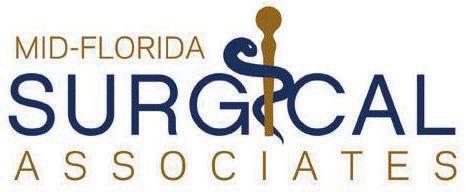









Dr. Rondon received his Medical Degree from Central University of Venezuela in 2000. He completed his general surgery residency from LKH-Graz Austria, and St John Hospital and Medical Center Detroit, Michigan. His internship was completed at Graduate Hospital, Philadelphia, PA. He received his Fellowship from the University of Texas Southwestern Medical Center, in minimally invasive and bariatic surgery.
He began practice by providing general surgery and advanced laparoscopic surgery services to the undersized area of the Appalachian region for two hospitals in the area of Kentucky and West Virginia.He provided care as a emergency department physician and Chief of Surgery for Tug Valley ARH Regional Medical Center in South Williamson, Kentucky.
He and his family relocated to Florida where he began practicing in February 2018 as a Board Certified General Surgeon with Mid-Florida Surgical Associates. The group provides surgical care for the communities of Lake, Orange and Sumter counties. The group is proud to announce Dr.Rondon as a member of their staff.




OCOEE 407.521.3600 CLERMONT 352.243.2622 www.midfloridasurgical.com
5K 5K
4 th ANNUAL BEACON COLLEG E NAVIGATORS 5K
ALL PROCEEDS BENEFIT BEACON COLLEGE
SATURDAY OCTOBER 12 2019 - 8AM
5K Location: Silver Lake Drive, Leesburg, FL (starting from Lake Sumter State College )




Early Registration:
Regular Registration:
$30
$35
Medals for top 3 Male & Female
Complimentary Medals for ALL finishers
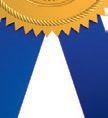






FOR MORE INFORMATION: Contact Steven McDaniels @ 352.552.3181 / smcdaniels@beaconcollege.edu
REGISTER AT:
https://Beacon5K.itsyourrace.com
























BeaconCollege.edu


50 lakehealthyliving.com
G et a T-Shirt Also












51
“Your work is going to fi large part of your life, and the only way to be truly ed is to do what you believe is great work. And the only way to do great work is to love what you do. If you haven’t found it yet, keep looking. Don’t settle. As with all matters of the heart, you’ll know when you fi
—Steve Jobs
STOP BLAMING YOURSELF
The truth is, it is not your fault. Illness is rarely something you can fix overnight. You’re already eating healthy and trying your hardest to get well. So give yourself credit and be your own most enthusiastic cheerleader.
No more negativity
Negativity can exacerbate any situation you're facing.
Story: Teresa Stickney
If you’re struggling with a chronic illness, you may find yourself at times asking, “What did I do to deserve this? What am I doing wrong? Why am I not getting better?”
DON’T DEPEND ON EMPATHY
This includes your closest friends and family. It is impossible for them to know what it’s like to feel unwell for a long period of time. And mainstream medicine’s denial of our country’s most epidemic chronic illnesses leads to a culture of patientblaming: if they can’t explain it and cure it, it must be “in your head.”
Find a support group where you will be validated and encouraged by people who have been where you are. Validation and solidarity are powerful factors in recovery.
KEEP SEARCHING FOR THE GOLD
After spending most of my life feeling sorry for myself, I finally got up enough courage to say, this must be here for a reason. I’m going to treat it as a teacher and see what I can gain from it.” That’s when my healing took a true quantum leap.
Approaching health challenges from an open, spacious place of nonjudgmental curiosity tells the universe, “I’m ready to learn this lesson and move on.” Everything that happens to us is to help us evolve, and illnesses contain valuable jewels for us on our path.
As someone who has struggled with Lyme disease for 20 years now, I can tell you that these questions are understandable. The uncertainty and daily discomfort of living with an illness that constantly limits you is incredibly frustrating. When these sentiments arise, the trick is to allow them and process them, but not to get stuck in them. They can lead you into a spiral of despair and guilt and stress you don’t need. Here are four simple ways to reduce your negative thoughts.
LAUGH
Laughter releases dopamine and serotonin into the bloodstream, triggering the parasympathetic nervous system’s relaxation response. It actually helps your body heal faster!
Laughing gets you to breathe, and all that oxygen is vital for cellular health. It’s also an excellent way to bond with others, and a great tool to quickly shift your vibration during times of doubt. Try laughter yoga, games or funny movies.
52 lakehealthyliving.com
ABOUT THE WRITER → Teresa Stickney is a yoga teacher, artist, speaker and coach for people healing chronic illnesses.
Doctor Supervised: Daily monitoring helps ensure SUBSTANTIAL, FAST and SAFE weight loss!


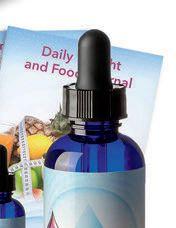











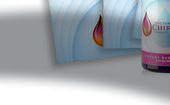







Researched & Proven Results: A recent 573 participant study showed an average weight loss of 22.4 pounds for women and 30 pounds for men in just 6 weeks while following the program.
Saves Time: Since exercise is not required, there is no need to spend hours at the gym or with personal trainers every week!
Uses REAL Food: You will learn the types and combinations of food that will help you lose a significant amount of weight quickly and help you keep the weight off once and for all. There are no disgusting pre-packaged meals, gritty and messy shakes, cardboard meal-replacement bars or counting “points.”






Lose 25-40+ Pounds Quickly, Safely, and Privately with our Doctor-Based Concierge Weight Loss Program* Find ChiroThin™ at: Call Us Today for a FREE Consultaiton: 352.365.1191 ECDoctors.com Two Locations: Fruitland Park/Leesburg The Villages (Lake Sumter Landing)
of our Concierge Weight Loss Program include:
Benefits
Visit Us Online & Learn More: ECDoctors.com Or Call 352.365.1191
A little homework help
Story: Carol Tuttle



When it comes to your child’s homework, do you beg, plead, or bribe? Do you threaten consequences? You can make homework easier for both you and your children with some simple tips to honor their natural energy. Every child has a dominant energy type that determines the way they move through life. It affects everything they do: playing, talking, eating, sleeping. And yes, it even shows up in the way they do homework. Ready to take the struggle out of homework? Here are tips for the four types of children:
THE DETERMINED TYPE 2 CHILD – These active children move swiftly and like getting things done. Their natural speed can be a challenge when it comes to detailed tasks that they feel are tedious or pointless.



• Help them see the point of it.
THE FUN-LOVING TYPE 1 CHILD – These bright-minded children think quickly and like to move. Their thought process works like snapshots of ideas, so engaging in a linear experience can be challenging for them.
• Pre-homework playtime. If your child attends a traditional school, they them come up with ideas of what they’ll do—that will give them something to
• Homework jumping.

background is actually helpful for them because it allows them to disconnect




54 lakehealthyliving.com
• Make homework part of the extracurricular fund. Money is a great motiva-
THE MORE SERIOUS TYPE 4 CHILD – These focused children are self-motivated. But if they’re not respected for who they are at school, they’ll buck the system. It will look like rebellion, but it’s really just their attempt to stay true to their nature.

• The respectful phrase.




• Ownership of a space. Set aside one consistent place where they can take ownership at the same time every day to do their homework—not
THE SENSITIVE TYPE 3 CHILD – These subtle children work methodically and are great with details. They are naturally quieter, so speaking up about what they might need can be a challenge for them.



• Planned routine (one that they plan).
• Invitation to connect.
Parents, here’s your homework assignment to end the homework struggle for good: Set the intention that you and your child are experiencing ease and enjoyment as you support them in their homework. It’s possible and you can start today.
September 2019 55 ABOUT THE WRITER →





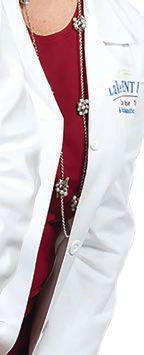
352.728.2404 | LakeENT.net THE VILLAGES | LEESBURG | TAVARES SINUS DISORDERS | ALLERGIES & TESTING | THROAT CONDITIONS | AUDIOLOGY PROVIDING YOU AND YOUR FAMILY WITH DIAGNOSES, TREATMENT AND RELIEF BY OUR EXCEPTIONALLY TRAINED TEAM OF HEALTH CARE PROFESSIONALS



















Over 700 billion minutes are being spent monthly on Facebook alone, making social media the most powerful venue for engagement. Allow Akers Media to evaluate your business, discover where your key customers are and develop and plan to grow your business through social media management. Call us today for a free consultation 352.787.4112 akersmediagroup.com Social Media Management Your Solution to Social Media



















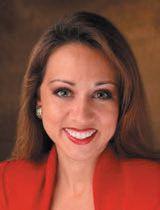


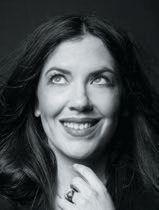

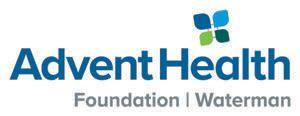




For reservations and sponsorship information, please contact AdventHealth Waterman Foundation at 352.253.3270 or joan.ordazzo@adventhealth.com or purchase tickets at https://ladieslegacyluncheon.eventbrite.com WRITE TO US IF YOU WISH TO HAVE YOUR NAME REMOVED FROM THE LIST TO RECEIVE FUTURE FUNDRAISING REQUESTS TO SUPPORT ADVENTHEALTH WATERMAN FOUNDATION. A COPY OF THE OFFICIAL REGISTRATION AND FINANCIAL INFORMATION MAY BE OBTAINED FROM THE DIVISION OF CONSUMER SERVICES AT WWW.800HELPFLA.COM OR BY CALLING TOLL-FREE (800-435-7352) WITHIN THE STATE. REGISTRATION DOES NOT IMPLY ENDORSEMENT, APPROVAL, OR RECOMMENDATION BY THE STATE. THE REGISTRATION NUMBER FOR THE A DVENTHEALTH WATERMAN FOUNDATION, INC. IS CH2225. 100% OF CONTRIBUTIONS SOLICITED BY THE ADVENTHEALTH WATERMAN FOUNDATION BENEFIT ADVENTHEALTH WATERMAN AND THE ADVENT HEALTH WATERMAN FOUNDATION, INC. #InspireALegacy Invite a woman you admire to join you and tag your guest(s) on social media! Friday, October 4, 2019 • Lake Receptions (4425 N Highway 19A, Mount Dora) Exhibitor Booths 10:00 a.m. • Luncheon Program 11:30 a.m.
Kristin Beall Ludecke Mom, Building Contractor, Former Miss Florida and Cancer Survivor
Michele Rigby Assad Author, Public Speaker, Trainer, International Security Consultant and Former CIA Undercover Intelligence Officer 1500 Waterman Way, Tavares, FL 32778 Phone 352.253.3270 | Fax 352.253.3266 www.AdventHealthWatermanFoundation.com 6 TH ANNUAL ADVENTHEALTH WATERMAN FOUNDATION luncheon LADIES
PRESENTED BY Inspire and be Inspired
Emcee
Keynote Speaker
LEGACY
Americans and budgeting














Americans agree that budgeting is important but maybe not for them, according to a debt.com 2019 Budgeting Survey. While 97 percent of women believe budgets are needed, only 90 percent of men agree.




Surprisingly, people ages 23-28 thought having a budget was more important (74 percent) than those 39 and older (67 percent). Again, women outnumber men in using a website to organize a budget: 34 percent of women did while only 18 percent of men did.



The top answer to the question, “Why don’t you budget?” at 39 percent, was not enough income to warrant a budget, although 77 percent of people admitted having a budget helped them get out of debt. See the full survey results at debt.com.













59
Dear Dave,
DAVE SAYS


Dear Marya,

I would get one advisor, and I wouldn’t invest all my mutual funds in one fund. Virtually all mutual fund advisors can sell pretty much any mutual fund, and you can buy an array of different mutual funds from different companies through one advisor. That gives you diversification. So, there’s really no advantage in having multiple advisors, unless you don’t trust someone’s advice. And if you don’t trust someone’s advice, why are you working with them in the first place?


















I personally have one financial advisor, and I trust that person. Still, I ask lots of questions and make sure I understand everything that’s going on with my money and the investment before making a decision. Why are you recommending this? What is it about them you like? Show me the fund and how it compares to the S&P and other funds in the same category. If you approach it this way, and again, you have one advisor, it’s a learning process and you become a more educated investor. Plus, after a while, you can create your own diversification. Never put money into something you don’t fully understand.




 —Dave
—Dave

Dear Adrienne,
Dear Dave,

First of all, your finances should remain separate until you’re married. There shouldn’t be a “we” in terms of money at this point. You can always run a single budget that you both look at and prepare for after you’re married, but right now, he shouldn’t be paying your bills and you shouldn’t be paying his bills.
The biggest problem I see is that he’s making no money. He needs to get a better job. He can’t pay his bills and, in the process, he’s sucking you dry. I’m sure your fiancé is a good, hardworking man, but he needs to make a serious career shift soon—like now! In the meantime, this guy needs to take on a part-time job or two until he gets that career shifted. It’s not really a budgeting problem you’re looking at. It’s an income issue.
60 lakehealthyliving.com
ABOUT THE WRITER → Dave Ramsey is CEO of Ramsey Solutions. He has authored seven best-selling books, including “The Total Money Makeover.” “The Dave Ramsey Show” is heard by more than 13 million listeners each week on 585 radio stations and multiple digital platforms. Follow Dave on the web at daveramsey.com and on Twitter at @DaveRamsey.
Keep your eggs in one basket.
—Dave
LOST AND OVERWHELMED
DIVERSIFY ADVISORS?












D EDICATED T O Y OUR G OOD T ASTE 19239 US 27 N ORTH • C LERMONT , FL 34715 352-394-8627 • 1-800-768-WINE 14th & 15th
Getting down to business
Ask yourself some tough questions before starting your own company.





My mom started her business when I was only 6 months old. She was a single mother with only $64 to her name but also had a determination to survive. To make ends meet, she went back to the one thing she knew she was really good at: baking and decorating cakes. When I see small businesses being celebrated throughout the year, I always think back to my roots. It reminds me of my childhood, which is lled with sweet memories from the cake shop my mom started more than 35 years ago. I grew up watching her struggle and work hard as she built a business and a life doing what she loved. But the best part is that it lit a fi in me to help equip other women to do the same.
Because of my mom, I started some side businesses of my own. And later, ed business coach and created the Business Boutique. I wanted to build a place for women to overcome fear and learn everything they needed to know about starting and growing a business.
For many of us, the journey begins (and sometimes ends) with one question: Do I have what it takes to start a small business?





As much as I love small-business owners, the answer isn’t always “Yes.” It takes a certain kind of person with the willingness to put themselves out there and the determination to persevere. You’ve got to be OK with unknown risks, a lot of responsibility and really hard work at times. So, to help women figure out if this might be worth their while, I usually ask them three questions:
1. DO YOU WANT TO HELP PEOPLE?






If you don’t really like people or helping them, then starting a business is probably not

62 lakehealthyliving.com
right for you. But if you get excited about serving others in some way—improving their lives, meeting their needs, solving their problems or listening to their complaints (because, let’s be honest, there will be some)—then this might be right for you. And if you already have in mind how you want to
There’s a difference between a hobby and a business: A business makes you money, while a hobby costs you money. Many people pursue their hobby as a business and then end up broke, because they just don’t care about making money or they “feel bad” for charging someone for what they do.





Now, if you do want to make profi you have some weird, squirmy feelings about money, that’s normal. I coach women every day to help them face their fears about pricing their product, charging customers, and paying themselves. Just because you have a love-hate relationship with money doesn’t mean you can’t make it. You just need a little help. But you need to have a drive to make money if you’re ever going to make any (translation: stay in business).







I’m not going to sugarcoat this: Business is hard work at times. It just is. But if you want it bad enough and are willing to put in the blood, sweat, and tears, then you can make it. You don’t need a business degree, a pile of money, or all the bells and whistles to build
the top. They were just willing to get knocked down over and over again, get back up, dust themselves off, and keep going. ect over these three questions. They’re great indicators of whether starting a business might be a t for you. I sure hope it is, because I love small businesses. Small businesses are the backbone of our economy. They create jobs, pour back into their communities, and lead the charge in new technology and
I can’t help but dream about seeing even more women pursue their passion and build a life making money doing what they love. So, let me ask you, will

















Living in Lake County, Florida, is a lot about enjoying a special quality of life. Orlando Health South Lake Hospital is proud to contribute to that quality of life through our award-winning medical care. We are the only hospital in Lake County to recently earn both an “A” safety rating by the Leapfrog Group and a 4-Star providing the highest level of safe, quality care. RATED HOSPITAL IN LAKE COUNTY. ChooseOrlandoHealth.com THE ONLY 'A' AND 4-STAR The Leapfrog Group Hospital Safety Score Program, Spring 2019 Centers for Medicare & Medicaid Services Hospital Compare Overall Ratings










Tackling fanaticism
 Story: James Combs
Story: James Combs
It began with a little smack talk. Then the men found themselves face to face.
Insults were hurled, followed by a torrent of punches, kicks, and headbutts. The enraged combatants wrestled each other to the ground as curious onlookers used their cellphones to video the melee and make it go viral.
It’s what you’d expect to see in a heated rivalry game. Except, in this case, the violence was coming from the stands.
Fan fighting seems to be an increasingly growing problem these days inside collegiate and professional sports venues. Call me old school, but I have a problem when middleaged, beer-bellied men are providing more action eld. I use my hard-earned money to pay for my seats, and the last thing I want is for a horde of brawling dimwits to ruin the
Perhaps it’s time for me to start enjoying
discuss the opioid epidemic or health-care crisis, two topics worthy of real passion.

In most cases, it’s probably one of two things. First, the combination of 12 beers and a lackluster performance from the home team likely will exacerbate feelings of hostility. Second, the Chuck Norris-wannabe fan with all the freefloating rage spends the entire game looking for a target until he finds someone to take the bait.
The latter will strike at any moment, even when the game comes down to a last-second field goal with a trip to the college football playoffs or the Super Bowl on the line. Of course, moments before the most important play of the game is always an ideal time to start a fi Said no real fan, ever.

Look, sports venues are not the Wild West. We’re there to cheer our teams, not walk around clinking our boot spurs and twirling our six-shooters. Enjoy everything that makes being at a sporting event great: the mascots and cheerleaders, the wafting aroma of popcorn and hot dogs, the crowd cheers and the wave.
Don’t let the irritating, smack-talking guy sitting directly behind you or the obnoxious drunk a few rows down ruin what should be an enjoyable experience.

his early 20s over a second-

security deal with them.

finalimpressions
66 lakehealthyliving.com
WELCOME DR. BALULAD

Sujata S. Balulad MD





Dr. Sujata S. Balulad is an electrophysiologist who recently joined Village Heart & Vein Center. Dr. Balulad is board-certified in Internal Medicine, Cardiology, Clinical Cardiac Electrophysiology, and completed fellowship training at the innovative Icahn School of Medicine at Mount Sinai Hospital, New York. She moved to New York after graduating from Topiwala National Medical College in Mumbai, India. She completed her residency at Albany Medical Center, New York, as well as fellowship training at Albany Medical Center, New York, and Lahey Hospital and Medical Center, Massachusetts. Dr. Balulad specializes in treating the abnormalities of electrical function of the heart. Her areas of special interest are treatment of arrhythmias and heart failure. Her passion is to improve her patients’ quality of life through minimally invasive procedures using the latest technology in the field of Clinical Cardiac Electrophysiology.
CERTIFICATIONS
Internal Medicine



Cardiology

Clinical Cardiac Electrophysiology


FELLOWSHIPS

Icahn School of Medicine at Mount Sinai Hospital, NY


Lahey Hospital and Medical Center, MA


Albany Medical Center, NY

The Oaks Professional Center, 8575 NE 138th Lane 352.674.2080 / heartofthevillages.com















































































































































 – Barbara Sue Jansen
– Barbara Sue Jansen
































































































































































 —Gary Hagen, Leesburg
—Gary Hagen, Leesburg



 —Jerry Galbreath, Leesburg
—Jerry Galbreath, Leesburg















































































































































































































































































































































































































 Mike Neace
Mike Neace





































































































































































































































































 Story: James Combs
Story: James Combs






















